Stephen King Wiki
Hello Stephen King fan ! We at the Stephen King Wiki are incredibly happy you've decided to visit, please feel free to check out our Discusions and/or start editing articles. If you're visiting anonymously you'll need to make an account . Before you start editing or posting, you'll want to read our simple ruleset , just so you don't accidentally break any rules. If you see anyone breaking any of these rules, please report it to the message wall of an Administrator .

- View history
" The Jaunt " is a short story written by Stephen King . It was originally published in the June 1981 issue of The Twilight Zone Magazine , and later included in King's own 1985 collection Skeleton Crew .

Summary [ ]
As a family prepares to be " Jaunted " to Mars in the 24th century, the father entertains his two children by recounting the curious tale of the discovery and history of this crude form of teleportation. He explains how the scientist who serendipitously discovered it quickly learned that it had a disturbing, inexplicable effect on the mice he "sent through"—eventually concluding that they could only survive the "Jaunt effect" while unconscious. That, the father explains, is why all people must undergo general anaesthesia before using the Jaunt.
The father spares his children the gruesome semi-apocryphal account of the first human to be Jaunted awake, a condemned murderer offered a full pardon for agreeing to the experiment. The man "came through" and immediately suffered a massive heart attack, living just long enough to utter a single cryptic phrase:
The father also doesn't mention that since that time, roughly thirty people have, voluntarily or otherwise, jaunted while conscious; they either died instantly or emerged insane. One woman was even shoved alive into eternal limbo by her murderous husband, stuck between two jaunt portals. The man was convicted of murder; though his attorneys attempted to argue that he was not guilty on the grounds that his wife was not technically dead, the implications of the same argument served to secure and hasten his execution.
After the father finishes his story, the family is subjected to the sleeping gas and Jaunted to Mars. When the father wakes, he finds that his inquisitive son held his breath in order to experience the Jaunt while conscious, and has been rendered completely insane. Hair white with shock, corneas yellowed with age, clawing out his own eyes, the boy reveals the terrible nature of the Jaunt: "Longer than you think, Dad! It's longer than you think!" While physically the process occurs nearly instantaneously, to the conscious mind it lasts an eternity and beyond.
- Stephen King
- 2 Overlook Hotel
- 3 Randall Flagg
We will keep fighting for all libraries - stand with us!
Internet Archive Audio

- This Just In
- Grateful Dead
- Old Time Radio
- 78 RPMs and Cylinder Recordings
- Audio Books & Poetry
- Computers, Technology and Science
- Music, Arts & Culture
- News & Public Affairs
- Spirituality & Religion
- Radio News Archive

- Flickr Commons
- Occupy Wall Street Flickr
- NASA Images
- Solar System Collection
- Ames Research Center

- All Software
- Old School Emulation
- MS-DOS Games
- Historical Software
- Classic PC Games
- Software Library
- Kodi Archive and Support File
- Vintage Software
- CD-ROM Software
- CD-ROM Software Library
- Software Sites
- Tucows Software Library
- Shareware CD-ROMs
- Software Capsules Compilation
- CD-ROM Images
- ZX Spectrum
- DOOM Level CD

- Smithsonian Libraries
- FEDLINK (US)
- Lincoln Collection
- American Libraries
- Canadian Libraries
- Universal Library
- Project Gutenberg
- Children's Library
- Biodiversity Heritage Library
- Books by Language
- Additional Collections

- Prelinger Archives
- Democracy Now!
- Occupy Wall Street
- TV NSA Clip Library
- Animation & Cartoons
- Arts & Music
- Computers & Technology
- Cultural & Academic Films
- Ephemeral Films
- Sports Videos
- Videogame Videos
- Youth Media
Search the history of over 866 billion web pages on the Internet.
Mobile Apps
- Wayback Machine (iOS)
- Wayback Machine (Android)
Browser Extensions
Archive-it subscription.
- Explore the Collections
- Build Collections
Save Page Now
Capture a web page as it appears now for use as a trusted citation in the future.
Please enter a valid web address
- Donate Donate icon An illustration of a heart shape
The Jaunt Stephen King
Bookreader item preview, share or embed this item, flag this item for.
- Graphic Violence
- Explicit Sexual Content
- Hate Speech
- Misinformation/Disinformation
- Marketing/Phishing/Advertising
- Misleading/Inaccurate/Missing Metadata
plus-circle Add Review comment Reviews
29,022 Views
7 Favorites
DOWNLOAD OPTIONS
For users with print-disabilities
IN COLLECTIONS
Uploaded by Astronofeminist on August 10, 2020
SIMILAR ITEMS (based on metadata)

A synopsis for this story is not currently available.
Available In
There are no links for this Short Story.
by Stephen King
- ★ ★ ★ ★ 4.00 ·
- 13 Want to read
- 0 Currently reading
- 3 Have read
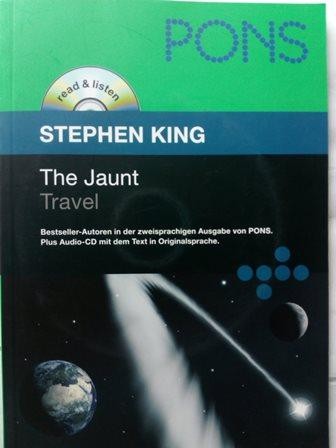
My Reading Lists:
Use this Work
Create a new list
My book notes.
My private notes about this edition:
Check nearby libraries
- Library.link
Buy this book
"The Jaunt" is a horror short story by Stephen King first published in The Twilight Zone Magazine in 1981, and collected in King's 1985 collection Skeleton Crew.
The story takes place early in the 24th century, when the technology for teleportation, referred to as "Jaunting", is commonplace, allowing for instantaneous transportation across enormous distances, even to other planets in the Solar System.
Also contained in:
- Skeleton Crew
Showing 1 featured edition. View all 1 editions?
Add another edition?
Book Details
Edition notes, links outside open library.
- stephenking.com/library/short_story/jaunt_the.html
- The Jaunt - Wikipedia
- The Jaunt by Stephen King · GitHub
- The Jaunt | Stephen King Wiki | Fandom
- The Jaunt by Stephen King [PDF] : spooky_stories - Reddit
- Neuroscience in Fiction: Stephen King's The Jaunt - Scientific ...
- Short story review: Stephen King's The Jaunt -The Gateway
- The Jaunt: Stephen King – Femnista
Community Reviews (0)

- Created April 21, 2020
- 3 revisions
Wikipedia citation
Copy and paste this code into your Wikipedia page. Need help?
Scan barcode
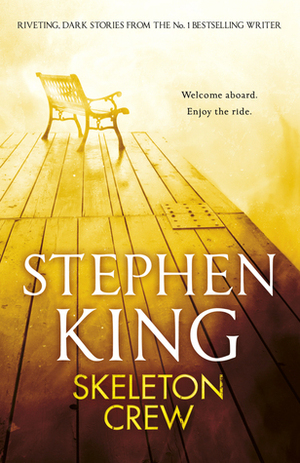
"The Jaunt" is a horror short story by Stephen King first published in The Twilight Zone Magazine in 1981, and collected in King's 1985 collection Skeleton Crew.The story takes place early in the 24th century, when the technology for teleportation...
Community Reviews Summary of 371 reviews
Plot- or character-driven?
Strong character development?
Loveable characters?
Diverse cast of characters?
Flaws of characters a main focus?
Average rating
See all reviews...
Content Warnings
Submitted by users as part of their reviews
Bookshop US
Bookshop UK Blackwell's
The StoryGraph is an affiliate of the featured links. We earn commission on any purchases made.
Browse personalized similar books...
View question bank...
Start a buddy read...
Start a readalong...
Book Information
Add missing information...
Report missing/incorrect information...
By using The StoryGraph, you agree to our use of cookies . We use a small number of cookies to provide you with a great experience.
Find out more
SLAP HAPPY LARRY
The jaunt by stephen king short story analysis.
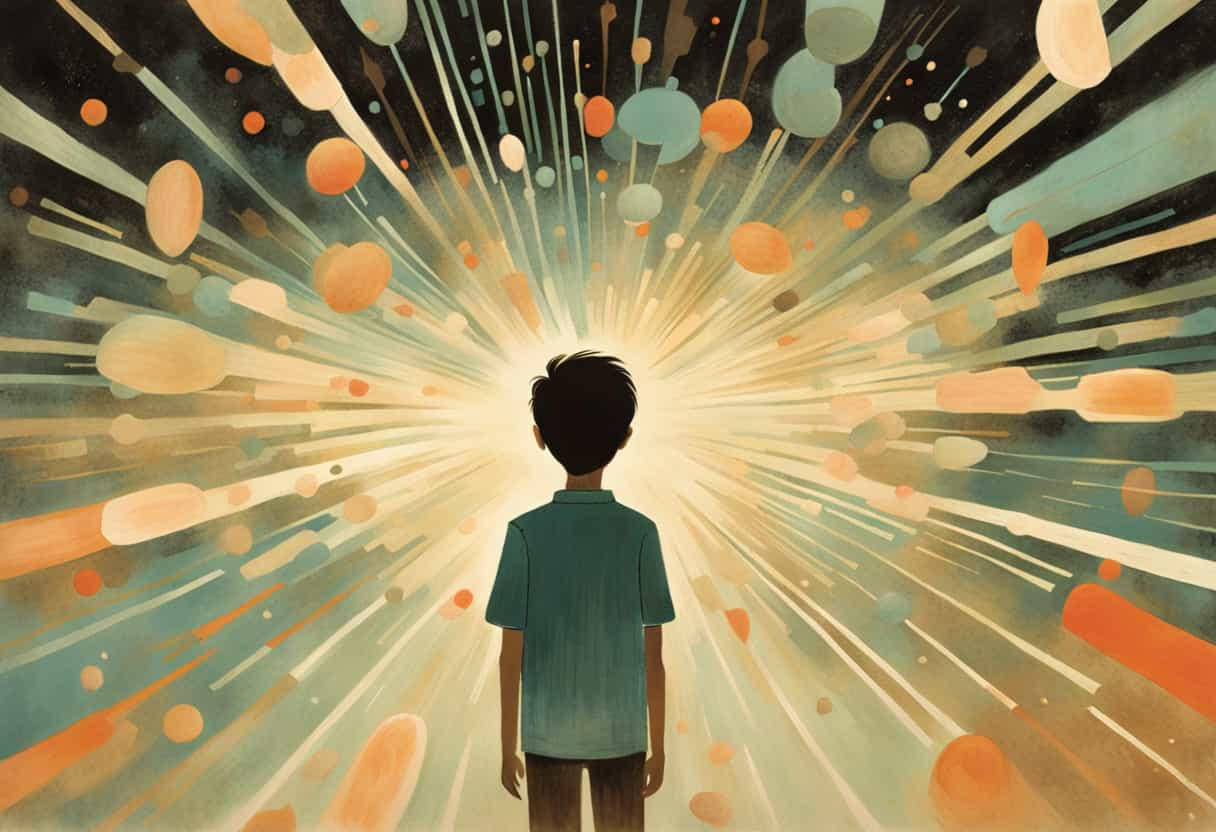
“Jaunt” (noun): a short excursion or journey made for pleasure. In my Australian dialect, the word ‘jaunt’ typically refers to an unnecessary trip made for an important stated purpose but which is actually just a waste of taxpayer’s money. I’m not sure if you find this usage much in other English speaking countries, but if you search for “political jaunt”, the entire first page of results are written by Australians. “Junket” means the same thing in this context*. If years of media consumption have taught me anything, Americans use the word ‘boondoggle’ instead.
“The Jaunt” is also a science fiction short story by American author Stephen King. Even by King’s standards, this narrative is famous for its shocking ending. Read it in King’s Skeleton Crew collection (1985) or at Internet Archive . This short story was first published in a 1981 edition of The Twilight Zone Magazine.
*Junket is also an old-fashioned dessert which I haven’t eaten since my grandmother died. I was never a fan.
DISCUSSION QUESTIONS FOR “THE JAUNT” BY STEPHEN KING
- All stories set in the future are really saying something about the present, so it pays not to dwell too much on whether futuristic stories are ‘realistic’ or not. Instead, what does Stephen King’s depiction of a futuristic teleport venue tell readers about the 20th century experience of airports? If this story were rewritten today, how would we imagine the future differently from how King imagined it ?
- Look up the meaning of heterotopia , as Michel Foucault described it. What can you say about heterotopies in relation to airport departure lounges, or to Stephen King’s teleport departure lounge experience?
- Of the Oates family, which of the family members is written by Stephen King to garner more sympathy?
- Consider how Stephen King has gendered the characters. Who has made all of the family decisions? What do you think of King’s depiction of Patricia, the viewpoint character’s daughter? How does this gendered characterisation compare with more modern science-fiction stories, e.g. the film Interstellar (2014)?
- In “The Jaunt”, a scientist invents teleportation by accident while trying to find a solution to a mundane problem. From real history, what would you consider the most significant accidental breakthrough in science for the advancement of humankind?
- After testing the invention on various animals, the first human guinea pig is a prisoner from Death Row. Discuss the ethics of consent behind utilising human prisoners for ground-breaking experiments. Is it more or less ethical to sacrifice another animal?
- What various writing techniques has Stephen King utilised to create the infamously shocking ending?
WHAT HAPPENS IN “THE JAUNT” BY STEPHEN KING?
The year 2287, the year 1987 plus 300 years.
DAD GOT A NEW JOB, NOW WE’RE MOVING TO MARS
Stephen King utilises the familiar experience of catching a plane in an airport but these people aren’t catching an aeroplane — they are teleporting themselves to Whitehead City, Mars. So far, this is sounding very much like a Ray Bradbury plot. (The influence is strong and clear.)
Rather than ‘passengers’, people who utilise the technology of The Jaunte (as it was previously known) are called ‘Jaunters’.
THE OATES FAMILY
A nuclear family of four from Schenectady, New York, wait in the slightly ominous departure lounge. This is their first teleport as a family, though the father has done it about 25 times before. He’s being transferred for work.
This father, called Mark, is the viewpoint character. He has a wife called Marilys, an annoyingly depicted 9-year-old daughter called Patricia who Stephen King writes as ‘giggling shrilly’ for no good reason, and a 12-year-old son called Ricky. This trip is more than a holiday — the children will be attending school on Mars alongside the children of ‘engineering and oil-company brats’.
The creepy father mulls over his decision to take his young children on this experience to Mars and thinks about how his daughter will soon be developing breasts. (For comparison, he thinks about his son’s adolescence in a more generalised way.)
THE GRADUALLY REVEALED DYSTOPIA
Readers gradually get the idea that Earth has gone to wreck and ruin due to human greed and negligence. People (Americans) can’t heat their houses due to lack of oil; there’s very little potable water left.
If this story were written today, the author would more likely be writing about Americans’ inability to cool their homes rather than heat them.
Next we learn that humans have poisoned most of their drinking water, which is the main concern.
By this point, humans have explored the Solar System and have colonised Mars and also managed to utilise resources on Venus. Humankind is looking to expand to other solar systems using ‘Jaunt-ships’.
THE DEPARTURE LOUNGE GETS MORE CREEPY
This teleporting venue of the distant future is very reminiscent of a modern airport, with an extra touch of the Kafkaesque. However, King tells us it’s ‘not at all grungy’:
It was wall-to-wall carpeted in oyster gray. The walls were an eggshell white and hung with pleasant nonrepresentational prints. A steady, soothing progression of colors met and swirled on the ceiling. There was one hundred couches in the large room, neatly spaced in rows of ten. “The Jaunt” by Stephen King
The trouble with being too specific about interior décor in a sci-fi story: what seems modern now will be outdated in a decade. Think of your local thriving shopping mall and how often that’s been revamped.
Nonrepresentational art: Artwork which is not supposed to represent anything in the real world. This is different from abstract art, which refers to recognizable imagery that does not reflect actual appearance.
Airport staff hand out glasses of milk, suggesting infantilization. And what’s with the ‘child’s slide’ leading down to a ‘trough’?
At one side of the room was an entranceway, flanked by armed guards and another Jaunt attendant who was checking the validation papers of a latecomer, a harried-looking businessman with the New York World-Times folded under one arm. Directly opposite, the floor dropped away in a trough about five feet wide and perhaps ten feet long; it passed through a doorless opening and looked a bit like a child’s slide. “The Jaunt” by Stephen King
Attendants walk quietly around the lounge with trolleys of creepy-looking medical equipment reminiscent of mid-century psychiatric hospitals and start knocking people out with masks, tubes and gas. Mark Oates’s creepy gaze settles on the briefly exposed varicose-veined thigh of a woman who has been knocked out. He is confident his son will deal with this process without making a fuss, but worries that his daughter will wig out.
THE HETEROTOPIES OF “THE JAUNT”
Let’s talk for a moment about the heterotopia of an airport departure lounge. Heterotopies are:
- both real and unreal
- have a specific operation anchored to a specific time
- have incompatible elements in a single state
- which function in temporal discontinuity
- are demarcated but acceptable, linked to the opening and closing of doors
- create some kind of illusion
The Oates family are in the Jaunt departure lounge for a specific reason (to be teleported to Mars). Only certain people are allowed to be there, and in fact there is a huge waiting list of people anxious to leave Earth. If someone chickens out, another person arrives to take their place. This is all carefully monitored by the opening and closing of some door. (And in this story, a memorable slide.) The restful décor works to create the illusion of calm and safety, when in fact this proves to be a dangerous procedure.
Heterotopies tend towards two extremes: Rare chaos and rare order. Stephen King utilises ‘order’ for the wrapper story and delves into chaos for the story-within-a-story as told by the father.
We could say that the science fiction concept of inhabitable hyperspace is the ultimate heterotopia (other place).
LEVEL OF CONFLICT: MIDDLE EAST As ENEMY
Readers learn simply that the world is running out of oil, which kicked off the whole Mars exploration in the first place. What oil remains is controlled by the Middle East ‘desert peoples’ who use it to wrest political control.
With that brief mention of ‘desert peoples’ controlling the last of Earth’s oil, we can deduce that the world is at war. For the Oates family, going to Mars isn’t the worst option.
TECHNOLOGY CRUCIAL TO THIS PARTICULAR STORY: teleportation
Stephen King gives just enough historical information about the teleportation technology to create verisimilitude for readers, which is a good choice, because it’s easier to explain away the history of a technology rather than how futuristic technology actually works.
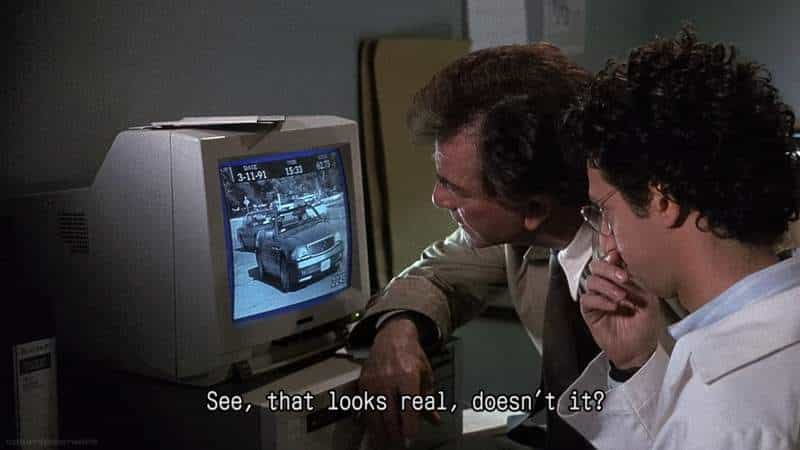
The father’s explanation stops short because he doesn’t want to freak out his daughter, soon to have a mask on her face.
Something about particle transmission. This happens in a barn. The inventor is trying to invent technology for long-distance material shipping but accidentally invents something spectacular.
Accidental breakthroughs in science are surprisingly common . The most significant accidental breakthrough widely regarded to be penicillin.
Test subjects are mice. He teleports a couple of his own fingers across the barn before he works out how to do the whole body.
But then we get the story-within-a-story about a brilliant genius by the name of Victor Carune, and his amazing scientific breakthrough.
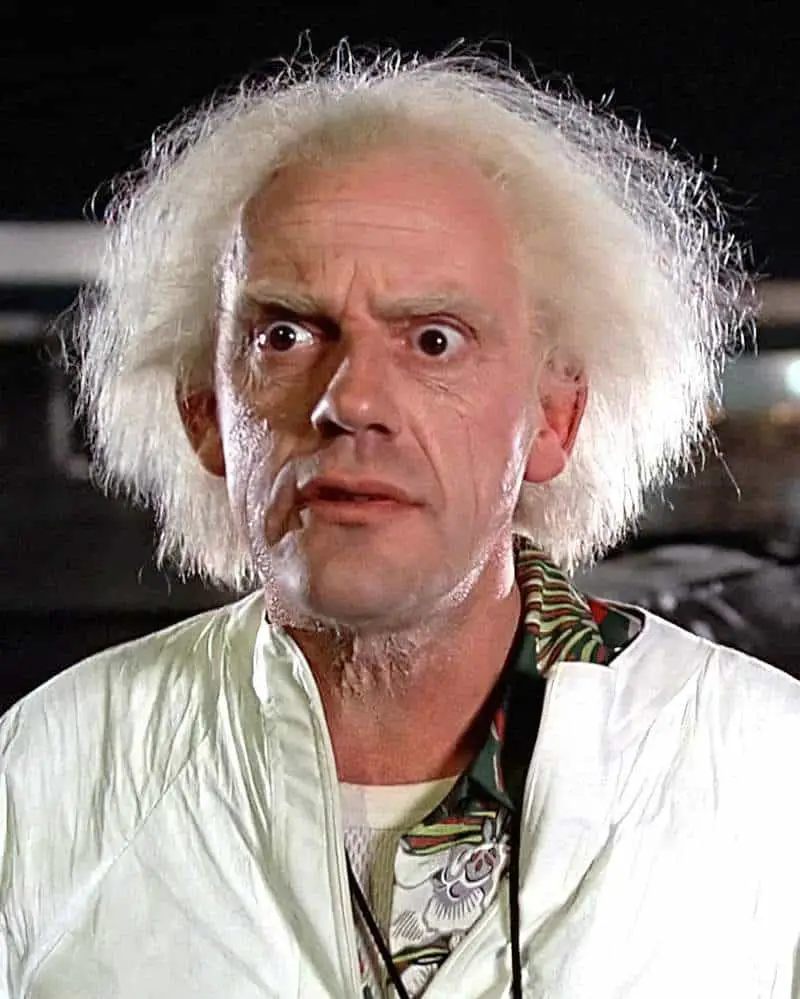
Anyway, the father knows all this because the inventor got an article published in Popular Mechanics Magazine before he was suppressed by the government.
Maybe if he directed his explanations at his daughter she might be less concerned, but Mr Oates has decided to explain the whole history of teleportation to his son instead. He doesn’t want to worry Patricia’s pretty little head. When she does ask a question, Mark tells her he doesn’t have time to ‘sketch the whole mess for you’.
BACK TO VICTOR CARUNE
To assuage the fears of his children (and also, by the way, infantilising his wife), Mark Oates continues the story of Genius Inventor Victor Carune, who manages to teleport a pencil, then his keys, then his watch. (Have you noticed how important wrist-watches are to Stephen King? They make it into a surprising number of his stories.)
When the watch makes it through the teleportation process, time to try it out on mice.
The kid demand to know what happened to the mice, but Mark does not want to make his wife ‘hysterical’ by telling the truth about those early experiments.
Victor’s original mouse isn’t too healthy. Stephen King affords the wife just a little agency by telling readers with a shift in point of view that she doesn’t buy the false smile Mark directs at his children by way of keeping them calm. The mouse dies. But the second mouse makes it.
Stephen King goes on and on about which mice died, which mice made it through, how Victor started experimenting with goldfish. All of this experimentation is happening without the approval of The Government. As noted at TV Tropes, King does a bunch of science hand-waving in this part of the story. He’s writing for plot, not for science enthusiasts here for the science:
In “The Jaunt”, Victor Carune tests the process on a pair of goldfish after the test mice all died or went catatonic. One fish dies, but the other somehow manages to shake off the effects after a few moments, which is implied to be because of it’s limited memory making simply forget about the time-dillation effect of The Jaunt. The idea that goldfish only retains a few seconds of memory at a time is a popular myth, but it doesn’t have any actual truth to it. Although it’s sure to cause a great deal of chaos, the tarantula Spike leaves for the McCarthys is in all likelihood not going to kill anyone, even if someone in the household gets bitten. Unless you’re allergic to their venom, the bite of a tarantula isn’t deadly, just very painful. Of course, there is the possibility Spike (and King) knows this, and really doesn’t care. He just wants to introduce a little anarchy to the McCarthys. TV Tropes
The first human test subject is a death row prisoner bound for the chair.
LONG STORY SHORT
Victor Carune works out that teleportation of animals only works if the animals are put to sleep.
The great man died before his genius could be recognised. Not only was he genius enough to invent the technology, but he also saw how humans were going to use it — for space travel and for mining on other planets.
THE TERRIBLE 1990S
In Stephen King’s 1981 story, the 1990s are a decade of dystopia. Looking back, though, the 1990s was a remarkably stable decade (for most of the world, at least). I was a teenager during the 1990s and can honestly say I did not spend any time at all worrying about climate disasters or world wars. When CFCs were banned in 1996 , it felt back then like we could trust political leaders to get things under control, even if they were a little slow off the mark.
Only looking back in hindsight do we understand that the 1990s appeared stable but provided the set-up for all sorts of future trouble .
A century on from WW2, Stephen King’s imagined future involves water-prospecting, and history revisits 1906 with regards to oil.
STEPHEN KING’S NARRATION: A BALANCE OF SUMMARY AND DIALOGUE
As the father continues to tell the story, he uses language (e.g. swearing) no 1980s father would use with their children. Stephen King summarises for readers the story Mark Oates tells his wife and children.
PACING HALTS to a pause
Readers now hear the gory parts Mark avoids telling his story. Whenever writers tell us what doesn’t happen, this is the pacing slowing down to a ‘Pause’ .
Because the technology kills people who aren’t put to sleep, it is now used as a murder weapon. A researcher kills his wife in this way, by pushing her out into ‘the ozone’. (People talked a lot more about ‘the ozone’ back in the early 1980s when the world was coming to grips with the damage wreaked by CFCs.)
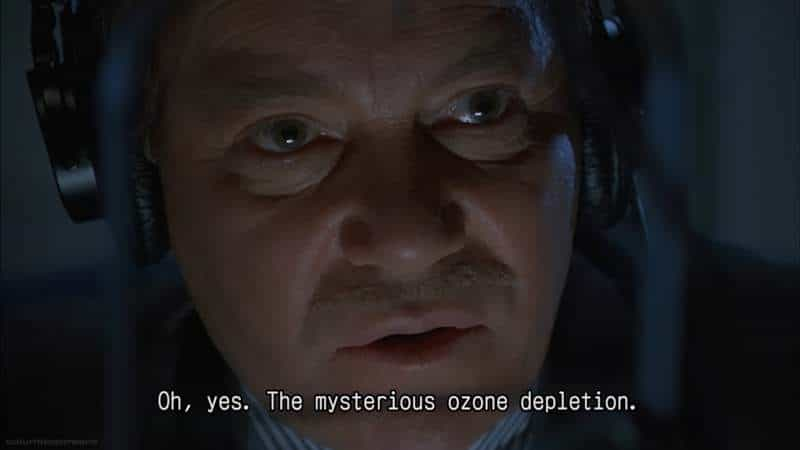
But the male researcher gets off the murder charge because no one can prove his wife is really dead. This isn’t a bad allegory for the way men have long abused the legal system by pleading all sorts of bullcrap about why they momentarily lost control and were somehow driven to it by their victim.
Hoist by His Own Petard : In “The Jaunt”, the story of a man who shoved his adulterous wife into an open teleport with no exit is brought up. It’s mentioned that, at the man’s trial for murder, his lawyer attempted to make the case that his client wasn’t guilty of murder because his wife was technically still alive . Unfortunately for him and his client, the jury only have to briefly consider the absolutely horrific implications of that defence before finding the man guilty and sentencing him to death. TV Tropes
AUTO-CANNIBALISM
Now we’re heading towards the end of the story, Stephen King offers up food for thought, regarding the big ideas of the story:
Mark fell silent, troubled by his son’s eyes, which were suddenly so sharp and curious. He understands but he doesn’t understand, Mark thought. Your mind can be your best friend; it can keep you amused even when there’s nothing to read, nothing to do. But it can turn on you when it’s left with no input for too long. It can turn on you, which means that it turns on itself, savages itself, perhaps consumes itself in an unthinkable act of auto-cannibalism. “The Jaunt” by Stephen King
Mark Oates is talking about the human mind, but the story is also about how humans have ‘cannibalised’ the Earth, to the point that it is no longer inhabitable.
a gap in the narrative
Back to ‘talking about story pacing’, Mark wakes up and he’s on Mars. A ‘narrative gap’ perfectly emulates the feeling of waking up from anaesthesia. If you’ve ever been medically sedated, it’s surprising to wake up and feel like no time has passed at all. This is most unlike sleep, in which we awaken with some sense of how long we’ve been sleeping.
THE SHOCKING ENDING
Mark Oates has underestimated his son. By telling him that story, leaving some of it out, his daring, curious boy has held his breath for the anesthesia. He wanted to see what happens during the teleporting process.
When the family reunites on Mars under a dark sky and a dome, the son inhabits a boy’s body but is an elderly man. He is yelling. Even staff who were trained for all eventualities, scatter. His mother is a screaming mess.
In one of Stephen King’s most gruesome endings, 12-year-old Ricky claws out his own eyes. He’s gone mad after spending so long inside the Jaunt, and after having seen what he has seen.
This is a classic cosmic horror ending . Cosmic horror ends in madness, death or both.
That final scene hits hard not for the gore, but because of the humanity. Members of a family have aged at different rates. The son will die soon. This goes against the natural order of things. We also feel massive regret at all that time lost together. It’s as if Ricky has died even while still alive. A shocking prospect.
The best thing about stories which utilise this time-travel-ageing trope and similar is that it is physically possible, according to what astrophysicists understand about time. There’s no more visceral way to communicate the complexities and terror of time passing to an Earthbound audience than to illuminate it via a family, because we all understand that time is terrible. We age, we die. We try not to think about it too much.
THE INFAMOUS ENDING
Although Steven King has no time for evangelical Christianity (cf. “Children of the Corn”, King’s stories draw from ideas in common with stories in the Bible. In this case, the son has seen something glorious while in the nowhere-world between life and death:
Narratives of enchantment emphasize the blindness of the victim to the human world when she [the fairytale victim is usually a ‘she’] is incorporated in the supranormal sphere. A similar trope of blindness recurs in descriptions of the relationship between the human world and the afterlife. It is only after death that man can see eternity with clarity: human life is thus a haze that prevents him from perceiving the realm of God. A legend from Korsholm parish seems to rely directly on the idea that one sees clearly at the time of death: If one takes soul water from the eyes of a dead man, at the moment of death, and smears it onto one’s eyes, then a haze falls from one’s eyes, and one starts seeing all that will befall one in this life and in the afterlife, and one will become a mediator between the dead and their relatives, so that the dead come to [such a person] if they have something to say to the living, and one has the power to call forth the dead as one wishes. But an impious [person] should not do that. There was a man, who was a great drinker, and his wife heard about this, and she thought that if his eyes were opened, he would stop drinking, and that’s why she gave him these drops to drink, and his eyes were opened and he saw how he would fare in eternity, and therefore he was afraid of everything and [it] ended with him drowning himself.
Soul water, taken from a dying person at the moment of death, bestows the ability to see what happens in the afterlife because it is at this precise juncture that the blindness of the human world gives way to the vision of eternity. In this instance this trick is presented as a rather bad idea, but it does point to a way in which the limitations of human existence may be overcome. Thus … normal sight takes place through a haze, blocking the view of things beyond.
This motif is also present in the Bible, where the vision of human life is described as seeing “through a glass, darkly” (1 Corinthians 13:12), and when man beholds the glory of the Lord, it is “as in a glass” (2 Corinthians 3:18). Man must escape his spatial and temporal environment (the chronotope of the human world) to fully actualize the cornerstone of his identity, his identity as a Christian and redeemed creature.
Aside from the terror of time passing, the ending of “The Jaunt” shocks because of the story-within-a-story technique. The wrapper story (of the Oates family in the departure lounge) has been written in realistic style. The departure lounge of the Jaunt is basically an airline departure lounge, and the historical story contains so much detail it runs to the boring. (At least, that’s the effect it has on me.) The dad’s story about Victor Carune lulls me into a sort of bored trance.
All of the gory stuff in the middle of this tale — which may have otherwise prepared readers for a shock ending — happens only in the historical story-within-a-story as recounted by the dad. Basically, Stephen King gives readers no warning*.
*Some people would use the word foreshadowing . To my mind, it’s not foreshadowing unless it works at a metaphorical level.
CONTEMPORARY FICTION SET IN AUSTRALIA AND NEW ZEALAND (2023)

On paper, things look fine. Sam Dennon recently inherited significant wealth from his uncle. As a respected architect, Sam spends his days thinking about the family needs and rich lives of his clients. But privately? Even his enduring love of amateur astronomy is on the wane. Sam has built a sustainable-architecture display home for himself but hasn’t yet moved into it, preferring to sleep in his cocoon of a campervan. Although they never announced it publicly, Sam’s wife and business partner ended their marriage years ago due to lack of intimacy, leaving Sam with the sense he is irreparably broken.
Now his beloved uncle has died. An intensifying fear manifests as health anxiety, with night terrors from a half-remembered early childhood event. To assuage the loneliness, Sam embarks on a Personal Happiness Project:
1. Get a pet dog
2. Find a friend. Just one. Not too intense.
KINDLE EBOOK
The Most Terrifying Stephen King Short Story Has Yet To Be Adapted
"The Jaunt" is perfect material for a new sci-fi horror classic.
The Big Picture
- "The Jaunt" is a short but intense sci-fi horror story by Stephen King bursting with potential for a film adaptation.
- While initially casual, the tale takes a chilling turn with a disturbing ending that could make for an unforgettable film finale.
- Many have attempted to adapt "The Jaunt," but finding the right filmmaker is crucial to translate King's terrifying vision to screen.
Between movies, TV, and even a few video games, there is a sea of Stephen King adaptations out there for fans to consume, but there are still a number of his works yet to be lifted from the page. One of these is his 1981 short story, "The Jaunt." This bite-size sci-fi horror story packs a ridiculous amount of substance into just over 20 pages. It's a tale that chronicles the invention of teleportation, referred to as "Jaunting," told from the perspective of a 24th century family waiting to be Jaunted to Mars for a business trip. Initially, King's short story plays casual, but as things move along, it becomes clear that the dangers of Jaunting are much greater than expected. King's full-on novels are one thing, but "The Jaunt" proves that King can be terrifying even when he's paired down to a simple short story . If there's any untapped work of his that is riddled with potential, you're looking at it right here.
"The Jaunt" was originally published in The Twilight Zone Magazine in 1981. King was deep into his career of writing hit horror novels , coming off of a major string of instant classics like Carrie , The Shining , and The Stand , just to name a few. Regardless of the fact that he was a worldwide phenomenon, King continued to sharpen his craft by writing short stories that would go on to be published in magazines. With how popular his works were becoming, any and every property that sported the name Stephen King on its cover, poster, or slogan was sure to rake in boatloads of cash. This meant these short stories would live a temporary life in magazines, then go on to be published again in mass short story collections like his '70s collection Night Shift. "The Jaunt" would eventually come packaged in 1985's Skeleton Crew , the step that gave this story a life of its own, growing its reputation as one of King's best.

What Is Stephen King's "The Jaunt" About?
The story begins with Mark Oates and his family sitting in New York's Port Authority Terminal as they wait to be Jaunted to Mars for a two-year business trip. Oates' children become curious as to how the Jaunt came about, so until the Jaunting service comes to teleport him and his family away, Oates recounts the story of its invention for his children. The process initially came about in 1987 when a scientist named Victor Carune accidentally teleported two of his fingers. He would go on to attempt teleporting a number of other objects. Inanimate objects proved to teleport successfully, yet any time a mouse or goldfish came through the other side, it would either be dead upon arrival, or act strange shortly before dying. It eventually comes to Oates' attention that something would take place during teleportation that caused conscious living creatures to die, making it even clearer as to why all of his inanimate tests had no issues.
Stephen King Loved This Horror Movie so Much He Bought 800 Opening-Night Tickets
For the first half of the story, "The Jaunt" has a similar tone to many other underdog stories. It's initially fun for Oates as he tells his children Victor Carune's part of cracking teleportation, an exciting little sci-fi story about a lone scientist inventing what would be the most important and efficient means of teleportation in history. It is only when the story veers into human experimentation that "The Jaunt" begins to take on a more King-like flare. Without getting into spoiler territory, the second half goes from watching some truly unnerving tests take place to one of the most disturbing endings that King has to offer. "The Jaunt" goes out with a major bang. If it were eventually made into a film, that sucker would have an incredible finale, throttling the audience with an image that, if done right, would surely stick with viewers much like the photo reveal at the end of The Shining , or Carrie standing amidst her destruction on prom night. All this to say, it would take a real master to conjure up an image that could match what King puts into readers' heads after reading this short story.
Why Is Stephen King's "The Jaunt" Perfect for a Film Adaptation?
If there's any short story of King's that's perfect for adaptation into film , it's this one. It's easy to imagine "The Jaunt" as a tight 80-minute sci-fi thriller, one with a knockout ending that would quickly veer into some pretty shocking horror. Better yet, half of the story is told in one contained location, New York's Port Authority Terminal, a set that could be designed for a bigger budget, but perhaps would be done more effectively on a smaller or medium-sized budget. It's a fairly Cronenberg-like tale, similar in more ways than one to his remake of The Fly , so it would be fun if we could see Cronenberg tackle this adaptation after returning to horror with 2022's Crimes of the Future . It could be perfect grounds for his son Brandon Cronenberg , a filmmaker who has released three low-budget sci-fi horror films, including last year's Infinity Pool . It's also enticing to think of people like Duncan Jones , Shane Carruth , and Rian Johnson taking on "The Jaunt." Movies like Moon , Primer , and Looper are the kind of small-scale sci-fi that this adaptation would be in line with.
While we still haven't seen this Skeleton Crew excerpt make its way to screens just yet, it's not like there haven't been attempts made. In 2015, it was announced that Andy Muschietti , the director behind both recent parts of It , was working on a film adaptation. While that would have been interesting, his style is a bit more heightened and ghoulish, better fit for a story that isn't as realistically chilling as this. Safe to say he made the right decision to work on It , as his two adaptations collectively grossed over a billion dollars worldwide. Recently, in 2021, it was announced that Dave Erickson , co-creator of Fear the Walking Dead , would be bringing "The Jaunt" to TV as a series. It feels like a weird move to adapt a 24-page short story into a full-on television show with multiple seasons, at least if their intention is to faithfully bring the source material to life. It could work as a miniseries , starting each episode with Mark Oates setting up the next step to inventing teleportation for his family, followed by 20-40 minutes of flashbacks in which Victor Carune and the scientists that followed him run the short story's progressive Jaunt tests. Let's hope they take the miniseries route!
There have been so many Stephen King adaptations . It doesn't matter if they're critically regarded as "good" or "bad," film and TV versions of his works are almost always fun. This is almost a certainty for "The Jaunt" as well, a story rife with fun sci-fi ideas and shocking horror set-pieces. Let's hope that eventually, the right filmmaker comes around and brings this one to life as well.
Andy Muschietti's It is available to stream on Netflix in the U.S.
Watch on Netflix
Is Stephen King’s Scariest Short Story Finally Being Adapted?

- Share on Facebook
- Share on Twitter
- Share on LinkedIn
- Share on Flipboard
- Share on Reddit
- Share on Pinterest
- Share on WhatsApp
- Share via Email
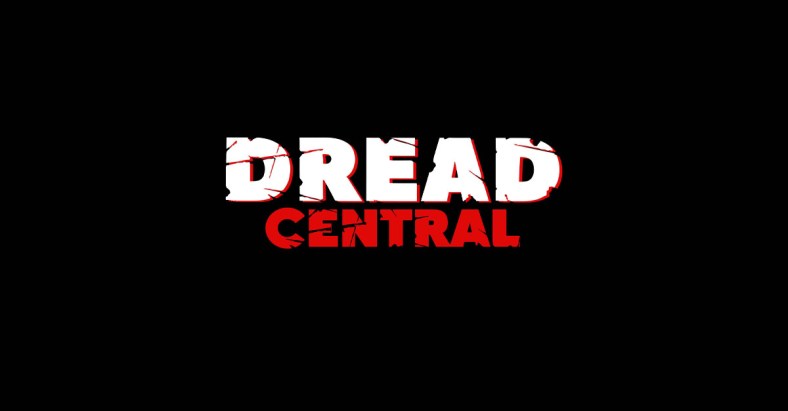
The first time I read “The Jaunt” was also my first time on an airplane by myself. I was 14 and about to fly from Toronto to Frankfurt. All I have with me are some snacks, a book, and my green iPod Mini. As the plane sits on the tarmac, I’m listening to the Stars album “Set Yourself On Fire” while anxiously awaiting departure.
It’s not that I’m afraid of flying, per se. I’m not scared of the plane crashing or subsequently dying in a fiery wreck. Instead, I’ve got this mild phobia of open spaces; a sort of agoraphobia. For example, when I’m on a bridge or in an open field, I start feeling panicky … like I’ll lose gravity … and fall right into the sky.
So I’m an anxious teenager sitting on a plane next to a family of Germans that seem keenly aware of my neurotic energy. I take out the only book I have packed, which happens to be Stephen King’s Skeleton Crew .
For the layman, Skeleton Crew is King’s second collection of scary short stories, published in 1985. A few of the universally acclaimed stories in this book include The Mist , The Raft , and Gramma . All of these have theatrical adaptations.
A few hours pass and I’m flying high above the endless, crushing void of the Atlantic ocean. This is when I happen upon a story called “The Jaunt”. I stare down at the first page, hesitating. I’ve skipped over this story a few times already, but I’m running out of new ones, so I start reading.
The terror of travel.
It kicks off in a Kubrickian future where a family prepares to “jaunt” from New York City to Mars. In the world of the story, “jaunting” is a method of intergalactic travel by means of teleportation. It’s made clear that the only way humans can jaunt safely is by first undergoing general anesthesia. It’s the only way to steer clear of what’s known as the “Jaunt-Effect”.
The father in the story spares his nuclear family the gruesome details of the jaunt-effect, but King fills in the blanks for the reader. An eccentric scientist invents teleportation by accident, soon noticing that mice only survive a jaunt if sent through the port unconscious. The first human to jaunt while awake is a test subject — a death-row inmate — who suffers a massive heart attack after emerging, staying alive long enough only to say, “It’s eternity in there…”
Over the course of the story, we discover that anyone sent through the portal awake suffers through an eternity of waking nothingness. Physical bodies arrive in a mere instant, while a human’s consciousness is trapped for billions of years in a void of endless white. All alone with their thoughts in the crushing nothingness, they inevitably go insane. Upon arrival, their hair turns white from experiencing the infinite, inter-dimensional terror of jaunting awake. They die almost immediately from the shock of coming back. I’ll spare you the extremely gruesome ending to this story, but I urge you to seek it out if you’ve never read it.
So this is what I’m reading as I’m rocketing through the air at a height of six miles up. The Germans nearby are looking at me funny because my face is so guffawed as I keep reading this story of unimaginable horror. A horror that resonates deeply with my personal form of agoraphobia. The plane hadn’t even landed in Germany before I was fantasizing about what a movie adaptation of “The Jaunt” could look like.
Fast forward ten years to 2015. Insidious and The Conjuring have disrupted the horror status quo, but it’s still a world of post- World War Z action and CGI. With that said, when Deadline reports Brad Pitt’s company Plan B optioned the rights to make a feature film of “The Jaunt”, I’m excited but hesitant.
Plan B signed emerging (at the time) filmmakers Andy and Barbara Muschietti. All they had to show for themselves back then was their first feature, Mama. I understand that Mama has its fans, but personally, I find it to be underwhelming and way too dependent on CGI. Still, a big-budget adaption of “The Jaunt”? How could I not be curious?
Time goes by.
First one year. Then two. Then three, and there is still no news or updates announced for the project. Andy and Barbara Muschietti move to their IT films, leaving The Jaunt captainless. During this time Brad Pitt wins an Oscar, and the genre films on his dashboard, including World War Z II , do nothing but collect dust.
Catching up to February 2021, a new update on The Jaunt appears. Fear the Walking Dead co-creator Dave Erickson is adapting Stephen King’s “The Jaunt” into a TV series for MRC Television…
MRC rep Elise Henderson shared the following statement:
“We’ve long admired Dave’s visionary creative work and are thrilled to welcome him to MRC. A true master of his craft, he’s the ideal partner to build upon the work of Stephen King, and create and develop more originals as the studio continues to expand.”
MRC’s most notable productions include Ozark , House of Cards , Baby Driver , and Knives Out .
This project holds a strange and special place in my heart for how closely the horror parallels my own phobias and anxieties. In a disturbing way, I feel seen by “The Jaunt”. My own brand of agoraphobia seems to lend itself well to the terror within the story that many consider Stephen King’s scariest. Of course, calling it his scariest story is a wild claim, so to be safe I’ll clarify: I find it to be his scariest story. I think there’s a good chance you will, too.
Something about the unspeakable horrors of the “jaunt-effect” also resonates with the idea of development hell. Both are never-ending limbos without death or existence. And neither space allows for closure; only the torture of nothing. Sometimes forever.
While it’s been well over 15 years, I’ll never forget the first time I read “The Jaunt”. Flying all alone across the vast span of the Atlantic Ocean. The next time you fly, bring a copy of Skeleton Crew with you. It’s worth it.
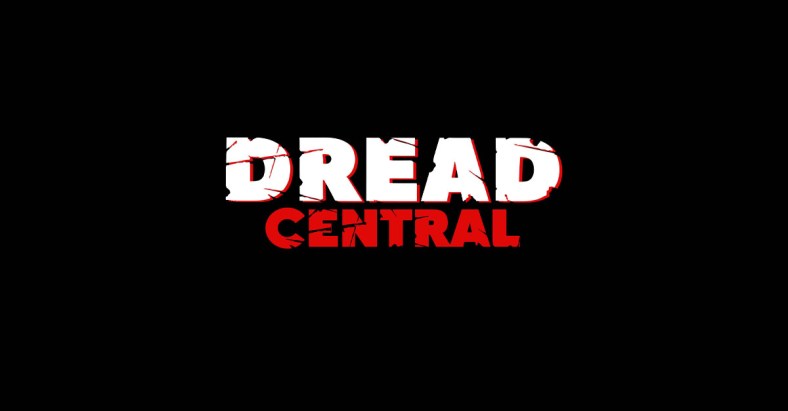
For more insight into The Jaunt and its journey towards a possible adaptation, check out this Development Hell podcast episode featuring Drew Tinnin. Are you as freaked out by this iconic short story? Let me know on Twitter via @joshkorngut . I’m always around to chat about all things Stephen King!
Categorized: Editorials News

May 4, 2013
Neuroscience in Fiction: Stephen King's The Jaunt
By Susana Martinez-Conde
This article was published in Scientific American’s former blog network and reflects the views of the author, not necessarily those of Scientific American

http://www.darekkocurek.com/en/gallery/image/stephen-king-the-jaunt
Stephen King - The Jaunt
Granted, Stephen King is not the first name that comes to mind when you think about neuroscience insights, but this week's Neuroscience in Fiction pick will give you a lot to ponder.
On supporting science journalism
If you're enjoying this article, consider supporting our award-winning journalism by subscribing . By purchasing a subscription you are helping to ensure the future of impactful stories about the discoveries and ideas shaping our world today.
The Jaunt is part of King's Skeleton Crew short story collection, and one of the most engaging sci-fi tales I've read. In the not-too-distant future, humankind has achieved teleportation, or as they call it, jaunting . Unconscious bodies and cargo can travel from the Earth to Mars in a fraction of a second, unharmed and unchanged. But the effect of the Jaunt on a fully conscious, sentient being, is a different creature altogether.
The Jaunt explores the limits of sustained sensory deprivation on the mind, with just a little bit of gore thrown in for added effect. We're talking about Stephen King, after all.
For extra credit, check out Sleights of Mind for our thoughts on the neuroscience of sensory deprivation.
The art featured in this post is the work of Darek Cokurek -- visit his website for more wonderful examples, including many covers of books by Stephen King.
We hope you enjoy The Jaunt . If nothing else, the ending will stay with you for longer than you think.
Stephen King teleportation story 'The Jaunt' to be adapted into TV series
The best teleportation-gone-wrong story since "The Fly."
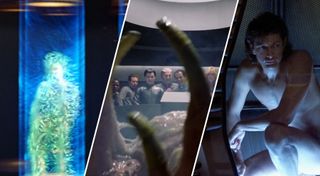
Co-creator of "Fear The Walking Dead" Dave Erickson is set to develop Stephen King’s short story "The Jaunt" for indie studio MRC (Media Rights Capital) Television.
According to Deadline , this is part of a multi-year deal in which Erickson will exclusively work on the creation and development of an unspecified number of television shows on which he will serve as writer and/or showrunner.
"The Jaunt" was published in the June 1981 issue of " The Twilight Zone Magazine ." The story takes place in the early 24th century, when teleportation (referred to as "Jaunting") is commonplace, allowing for instantaneous transportation across enormous distances, even to other planets in the solar system.
It follows a family who are waiting at an airport-like location to be transported from New York to Mars . While they wait, the father entertains his two children by telling them the story of how teleportation technology was discovered and developed. He explains how the scientist who invented it found that conscious living creatures emerged from a jaunt insane and erratic and quickly died. This is why every human being who uses the instantaneous teleportation must be unconscious in order to survive the "jaunt effect."
It's believed that while jaunting occurs virtually instantaneously to our physical bodies, to a conscious mind it lasts an eternity. To that person, they are utterly alone in an endless, blank void for what is thought to be anywhere from hundreds to billions of years, unable to die.
While his two young children are spared one or two of the fine details of this fascinating fable, the reader learns of some of the unpleasant events in this chapter of history, including some 30 or so human test subjects that went through conscious – and subsequently all emerged insane before dying — and even that the machine had been used on more than occasion as a murder weapon; one jaunt research pushed his wife through without setting a destination.
"This had raised the terrible specter of the woman, discorporeal but somehow still sentient, screaming in limbo … forever."
Get the Space.com Newsletter
Breaking space news, the latest updates on rocket launches, skywatching events and more!
When it's their turn to get seated and sedated, they are subjected to the sleeping gas and jaunted to Mars. But when the father awakens, he hears his wife and attendants scream. His curious son had deliberately held his breath while being administered the anesthetic so that he could experience the jaunt while conscious. The crinkled, frail body of what was once his son writhes and screams and he shrieks, "It's longer than you think, Dad! Longer than you think!" before clawing out his own bloodshot eyes as he is wheeled away.
Peak Stephen King. No doubt about that.
To be honest, we're surprised it's taken this long to adapt this incredible story, although we rather thought it might be a movie, rather than a TV show. That said however, it could also work well as a limited series. Let's just hope it's not utterly butchered like "Snowpiercer" has been.
“We’ve long admired Dave’s visionary creative work and are thrilled to welcome him to MRC,” said Elise Henderson, President of MRC Television. “A true master of his craft, he’s the ideal partner to build upon the work of Stephen King, and create and develop more originals as the studio continues to expand.”
MRC Television's recent credits to date include "Ozark," "House of Cards" and "The Outsider."
Follow Scott Snowden on Twitter . Follow us on Twitter @Spacedotcom and on Facebook .
Join our Space Forums to keep talking space on the latest missions, night sky and more! And if you have a news tip, correction or comment, let us know at: [email protected].

When Scott's application to the NASA astronaut training program was turned down, he was naturally upset...as any 6-year-old boy would be. He chose instead to write as much as he possibly could about science, technology and space exploration. He graduated from The University of Coventry and received his training on Fleet Street in London. He still hopes to be the first journalist in space.
James Webb Space Telescope documentary returns to IMAX theaters this week for Earth Day. Watch exclusive clips here (video)
This Week In Space podcast: Episode 107 — Mars Sample Return Blues
Pluto's heart-shaped scar may offer clues to the frozen world's history
Most Popular
- 2 Cosmic fountain is polluting intergalactic space with 50 million suns' worth of material
- 3 India aims to achieve 'debris-free' space missions by 2030
- 4 Scientists use AI to reconstruct energetic flare blasted from Milky Way's supermassive black hole
- 5 Earth Day 2024: Witness our changing planet in 12 incredible satellite images
Create a free profile to get unlimited access to exclusive videos, sweepstakes, and more!
Stephen King's sci-fi tale 'The Jaunt' coming to TV from Fear the Walking Dead co-creator
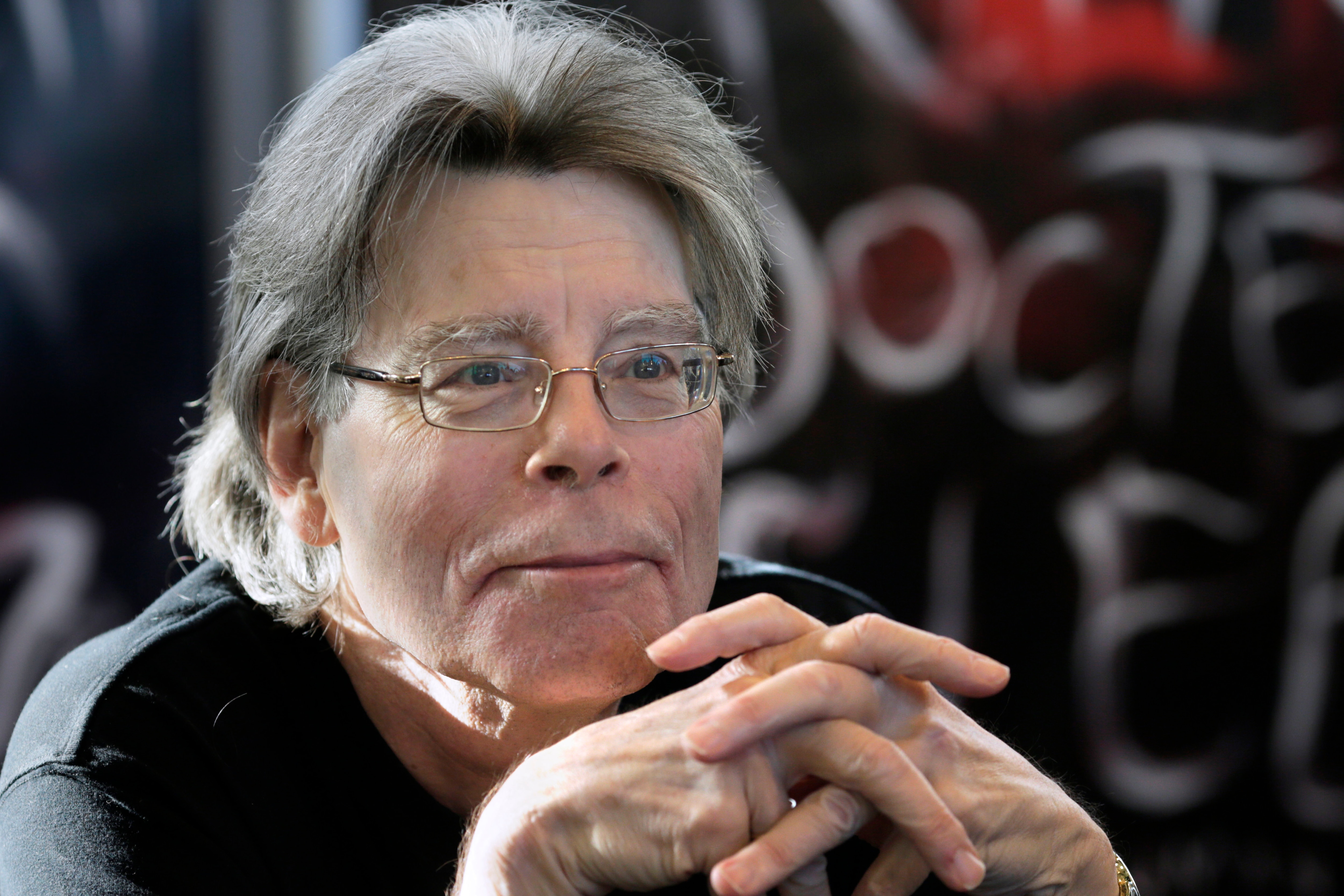
Credit: KENZO TRIBOUILLARD/AFP via Getty Images
Author Stephen King 's works have long been making the jump from the page to television or film , all the way from his bestselling novels like It , The Shining , and The Stand , to just as beloved novellas like The Body (AKA Stand By Me ) and The Shawshank Redemption — even inspiring a King-adjacent universe of its own, in Hulu's now-cancelled Castle Rock .
Now, Deadline is reporting that another tale is joining that list, with Fear The Walking Dead co-creator Dave Erickson adapting a King short story titled, "The Jaunt" into a TV series for MRC Television.
Originally written for The Twilight Zone Magazine in 1981 but now available in King's short story collection The Skeleton Key , "The Jaunt" tells the story of a future where teleportation technology has been developed, which the story derives its name from, as humankind starts "jaunt-ing" around the solar system, slowly colonising other planets. The story itself revolves around a man named Mark Oates, who's preparing his children for their trip from Schenectady, New York to Mars, by telling them about the history of how this form of travel even came to be — and how it can only be done while a person is unconscious as the process either kills people or drives them insane.
Erickson will create and develop the show, which he will also serve as showrunner on, writing or supervising other writers. It's part of an overall deal with MRC TV, in which Erickson, who served as executive producer for the first three seasons of FTW will exclusively develop content for the studio.
This is just the latest King adaptation to be announced in recent weeks, with Scott Pilgrim director Edgar Wright having reportedly signed on to adapt his novel The Running Man (written and published under his pseudonym Richard Bachman), and Apple TV+ getting set to release their J.J. Abrams-produced adaptation of Lisey's Story , a novel King has claimed is his favorite , later this summer. Meanwhile CBS All Access' The Stand miniseries just wrapped earlier this month, featuring a new ending from the king of horror himself.
No release date has been set for the project.
- Fear The Walking Dead
- Stephen King
Related Stories

Anthony Mackie On John Doe Vs. Sam Wilson

The Definitive Guide to The Munsters Adaptations

Did Marty Die (Twice?) in Back to the Future?

Were Back to the Future and Goonies Set on the Same Day?

Everything to Know About The Cancelled Miniseries Sequel to The Thing

Nope VFX Supervisor Dishes on Film's Creature Design

How Roland Emmerich Made Up Conspiracy Theory For Moonfall

How Resident Alien Made That George Takei Cameo Happen

Nathan Fillion's Resident Alien Cameo Explained

Why Are Parts of Oppenheimer in Black and White?

How to Stream Winnie-the-Pooh: Blood and Honey

Christian Bale Explains Why He Turned Down the Offer to Make a Fourth Dark Knight Film
Recommended for you.

Linda Hamilton on Resident Alien Role: "I'm Not the Funny Girl, I'm the Straight Man"

The Classic Twilight Zone Episode That Inspired Jordan Peele's Us

Resident Alien's Alan Tudyk on Harry's New Love Interest, Edi Patterson's Blue Avian

- Switch skin
Short story review: Stephen King’s “The Jaunt”
The jaunt questions society's desire for discovery and scientific developments.
How do you explain the realities of scientific progress to young children? Mark Oates, a father of two, wrangles with this question as he tells his children how teleportation was discovered in Stephen King’s short story, The Jaunt .
The Jaunt takes place hundreds of years in the future, in an alternate version of reality where humans discovered teleportation (or “jaunting”) in the 1980s. Anything, living or dead, can use the Jaunt, but there’s one catch: all conscious beings must be asleep while jaunting. Because he’s telling the story shortly before he and his family take their own Jaunt, Mark doesn’t want to tell his children about what happens to those who stay awake. This unanswered question is the main source of the story’s suspense, as the reader is slowly fed clues and information over the course of the story.
The Jaunt does a great job of blending science fiction and horror. The concept of “jaunting” and how it works is intriguing on its own. But soon, that curiosity so often piqued by science fiction turns to dread. King explores many different avenues that technology like the Jaunt could be used for and the potential uses get darker and darker as the story goes on. The reader becomes morbidly curious about what happens to those who stay awake, building suspense as the story progresses.
The well-developed alternate universe King builds also serves to paint a nuanced picture of the consequences of technological progress. Science fiction tends to depict technological advances in one of two ways: good and useful, or (if you’re in a dystopia) evil and deadly. The Jaunt is much more realistic. Humans use it to supply drinkable water to millions who wouldn’t otherwise have access to it, but it is also used by corrupt governments to get rid of political dissenters. Jaunting isn’t inherently good or evil, just a powerful tool that can be dangerous in the wrong hands.
The Jaunt forces the reader to stop and reconsider the value of discovery for discovery’s sake. Many scientific advancements we take for granted today, like modern gynecology , were developed by causing harm to animals and people. Same goes for the Jaunt. This story asks us whether knowledge and progress should be prized above all else, including the welfare of living beings, and whether there are some things the human mind cannot handle knowing.
The Jaunt was first published in 1981, but its uncomfortable questions remain relevant to this day. Finding a cheap, sustainable, environmentally friendly replacement for oil is at the forefront of the public’s mind and creating a way to teleport anything we want would solve a lot of our problems. But if that technology requires human suffering to develop and has the potential to cause a lot more, we may want to think twice before marching ahead.
Christine McManus
Related articles.

Social Intercourse: April 24

Celebrating community and theatre: An interview with Daryl Cloran

Play Review: The Swearing Jar

U of A alumna Kaeley Jade named Indigenous songwriter of the Year
Screen Rant
The green knight director almost adapted stephen king's the jaunt.
The Green Knight writer/director David Lowery reveals he nearly adapted Stephen King's 1981 short story The Jaunt for the big screen.
The Green Knight writer/director David Lowery reveals he nearly adapted Stephen King's short story "The Jaunt" for the big screen. First published in The Twilight Zone Magazine in 1981, the story is set in the early 24th century as humanity has developed the technology of teleportation, known as "Jaunting," and has become commonplace for use across enormous distances, including other planets in the Solar System, though users must be unconscious to use it. The short would later be included in King's 1985 collection Skeleton Crew .
Attempts to get an adaptation of "The Jaunt" off the ground have been in the works since 2015, with Brad Pitt's Plan B Entertainment optioning the rights to the story for Andy Muschietti to direct, though the filmmaker would elect to helm the two-part adaptation of King's IT a few months later. The latest effort hails from Fear the Walking Dead co-creator Dave Erickson, who was tapped by MRC Television to develop a series adaptation of the short story earlier this year. However, there was one other creative mind ready to throw their hat into the King ring prior to Erickson and MRC announcement.
Related: Every Way Cary Fukunaga’s Original Plan For Stephen King's It Changed
To discuss the release of his medieval fantasy epic The Green Knight , Lowery recently spoke with The Kingcast , Eric Vespe's King-focused podcast. The writer/director revealed he was actively pursuing an adaptation of "The Jaunt" and had even written a two-page story treatment that received King's approval, though chose to direct his attention to Disney's live-action Peter Pan film, whose timetable proved too extensive for the author to allow Lowery to hold on to the rights. See what Lowery said below:
“I had to admit that I wouldn’t be able to turn my attentions to 'The Jaunt'— or give it the attention it deserved — for at least another eighteen months. And because of that, it’s slipped away, and I know it’s now in development somewhere else. But I do hold out hope that one day I’ll get to return to that one.”
Forty years after its publishing and "The Jaunt" remains one of the more unique and underrated stories to come from the terrifying mind of King . In addition to being a rare venture into the sci-fi genre for the horror author, much of the story is told through flashbacks exploring the somewhat-mystical origins of the titular technology and stories of what happens to those who remain conscious during the journey. Though not without some psychologically horrifying revelations, it certainly proved to be one of his more restrained works in his bibliography.
Looking at his past projects, namely The Green Knight and The Old Man & the Gun , Lowery has consistently proven to take unique approaches to the material he sets his sights on. Given the filmmaker's ability to deliver both visually superb and intelligently written efforts, he would have been one of the better minds to bring "The Jaunt" to life on screen, especially with King himself having been impressed by Lowery's pitch. Only time will tell if Erickson's series adaptation can receive the same stamp of approval or if Lowery will get his hands on the right once again later down the road.
More: Stephen King: Every Story Adapted From Everything’s Eventual So Far
Source: The Kingcast
'The Jaunt' Series Based On Stephen King Short Story Coming From 'Fear The Walking Dead' Co-Creator Dave Erickson

The Jaunt , a spooky sci-fi short story from frightmaster Stephen King , is being turned into a series. Having read the story I can tell you that this is a weird idea, and I'm not sure how you even turn this into a series as opposed to a movie. But I'll let Dave Erickson work that one out. Erickson, co-creator of Fear the Walking Dead , is developing the series for MRC Television. The story is set in the 24th century, where teleportation is commonplace. Of course, since this is a Stephen King story, something goes wrong.
Deadline has the scoop on The Jaunt series, reporting that Dave Erickson, co-creator of Fear the Walking Dead , is working on developing the Stephen King short story into a show for MRC Television. "We've long admired Dave's visionary creative work and are thrilled to welcome him to MRC," said Elise Henderson, President of MRC. "A true master of his craft, he's the ideal partner to build upon the work of Stephen King, and create and develop more originals as the studio continues to expand."
The Jaunt was first published in The Twilight Zone Magazine in 1981, and collected in King's 1985 collection Skeleton Crew . The story is set primarily in the 24th century, where teleportation – or jaunting , as everyone calls it – has become the major method of transportation. But there's a catch: you have to be unconscious during the trip. Why? Well, because if you're awake and aware, you're going to see all sorts of cosmic horrors the human mind was never meant to see. As the story kicks-off, a family is about to jaunt off to Mars, and before they go, the patriarch of the family tells his two kids the story of how teleportation was discovered. The story involves a scientist in 1987 who accidentally discovers the process and began testing it on lab mice. The mice either die immediately after being teleported or go crazy and then die. Because of that, safety protocols are put in place to anesthetize folks who are jaunting.
And as I mentioned above, since this is a Stephen King story, the horror arises when someone dares to teleport while still awake. I won't give away what happens, but I will say that while it's plenty creepy, I'm struggling to see how this works as a TV series. Part of the power of the story is its disturbing reveal of what happens to any poor soul unlucky enough to still be awake during the Jaunt.
This sort of thing would probably work better as a movie, and at one point, that's exactly what was going to happen. A Jaunt movie was announced as being in the works back in 2015, and Andy Muschietti was in talks to direct. But the movie never came to be, and Muschietti moved on to a different Stephen King adaptation – It .
3 Hot List Hotels That Demand a Stay in 2024
By CNT Editors
Presented by Capital One
Every hotel winner on our 2024 Hot List makes its way there for a reason; these three properties serving are no exception. From brand-new properties The Fifth Avenue Hotel in the heart of Manhattan and the Eternal City’s 1, Place Vendôme to the just-reopened Kona Village, a Rosewood Resort on Hawaii’s Big Island, these are the new reliables where guests can make the most not just of the pristine properties but also the world of the destination around them. Here's how (and why) to spend a getaway at three of our 2024 Hot List winners, from Manhattan to Paris to Hawaii—plus what to pack for each.

The Portrait Bar at the Fifth Avenue Hotel in New York
The Fifth Avenue Hotel — New York City
The big hotel brands have long closed ranks in New York City along Central Park South, and most of them are great! But The Fifth Avenue Hotel, from its titular 5th Avenue address just above Madison Square Park and the world’s first Shake Shack (still a literal shack, albeit one with dreamy twinkly lights and ample outdoor seating) is a jewel box whose Mary Poppins-bag-style whimsy is made all the more impressive by its position amidst NoMad’s hustle and bustle. A five-story limestone-and-brick building with past lives first as part of a socialite’s estate and then as a bank, the hotel is storied despite its newness and fresh despite its long history. Designer Martin Brudnizki has payfully pulled at the Gilded Age, Renaissance palazzo roots with his jubilant palette and rich diversity of textures—wallpapers, rugs, and prints make an eye fat from feasting.
While a stay at The Fifth Avenue Hotel is ostensibly undertaken on some level to visit and see the Big Apple proper, stepping off the premises may prove unappealing once you’ve settled in. This is a whole world, one where the colors are richer and the people more thoughtful. After check-in, you’ll first meet your around-the-clock butler outside of your room where they await with a welcome drink and warm towel. Between 5 and 7 p.m., order a martini ritual to your room. Condescend to dine at onsite Cafe Carmellini, one of the best new restaurants in New York City. Flit out to nearby Gagosian and Fotografiska for a further art fix. It’s all that you need.
Beyond an extra suitcase to accommodate all the shopping you'll do nearby, pack whatever you feel most comfortable in—a neutral suit or little black dress to compliment the surroundings, or your most playful Rachel Comey to give the interiors a run for their money.

The exterior facade of the tony 1, Place Vendôme hotel in Paris's regally glamorous 1st arrondissement
1, Place Vendôme — Paris
Nestled above the 1st arrondissement’s Chopard boutique sits Paris’s new stealth-wealth gem of a hotel, the first from the Swiss fine jewelry maker owned by the Scheufele family. The watchmaking giant first bought the building, which dates back to 1723 (the roof and facades are protected historical monuments), a decade ago while it was still operating as another hotel, and subsequently embarked on a painstaking renovation and restoration project that birthed the beauty that exists today. With just 5 rooms and 10 suites, it’s a remarkably intimate affair. None looks like another, by the way—on one stay, you might lounge on the cobalt blue lounger of the modernist, Pop Art attic suite while the next sees you splayed out on the four-poster bed of double-height, quintessentially Parisian Appartement Chopard (the latter has its own hammam).
In the absence of an onsite restaurant, chef Boris Algarra slings his 24/7 menu (divided up between breakfast, day, and night) wherever the guest desires it—the library, the bedroom, you name it. And that’s saying nothing of the litany of fine dining found on the hotel’s doorstep—the neighborhood is the flâneur’s playground, with the Tulieres Gardens and prime shopping also a short jaunt away. Pack a good pair of walking shoes as Paris is, famously, best-walked from top to bottom with shopping bags weighing down either arm.

Kona Village, A Rosewood Resort, is prized for its location and laid-back vibe
Kona Village, a Rosewood Resort — Hawai'i
The new iteration of Kona Village, now operated by the reliably resplendent Rosewood group, ticks the boxes of design, location, and service in a way that few resorts across the Hawaiian islands have brushed the ceilings of. Senior editor Rebecca Misner dubbed the property “the Platonic ideal of the ‘Hawaiian hotel’” in her review. With 150 hale, or bungalows, dotting the 81 acres of oceanfront land, it earns its name for functioning as a sort of communal haven. The favored onsite watering hole, Shipwreck, sits within the gutted schooner of the original owner. A coconut outside a guest’s bungalow door sends the same signal that a do-not-disturb sign would at a more traditional hideaway.
As a preeminent resort, Kona Village offers everything you could ever dream of within its property line—two bars, two restaurants, a spa built into the site’s lava flow, and a beach that feels so endless in large part because there’s not much else in the vicinity. But the adventurous would be wise to call up the concierge, who can arrange excursions to the town of Waimea, as well as day trips to see the waterfalls in the North and guided hikes through hidden craters. Be sure to bring along your swimsuit, sarong, and a pair of water shoes for those excursions.
If you love to travel, Capital One has a rewards credit card that’s perfect for you. With the Venture X card from Capital One, earn unlimited double miles on everything you buy. Turn everyday purchases into extraordinary trips with Venture X from Capital One. What’s in your wallet?

IMAGES
VIDEO
COMMENTS
The Jaunt. " The Jaunt " is a horror short story by Stephen King first published in The Twilight Zone Magazine in 1981, and collected in King's 1985 collection Skeleton Crew. [1] The story takes place early in the 24th century, when the technology for teleportation, referred to as "Jaunting", is commonplace, allowing for instantaneous ...
The Jaunt Steven King Chapter 1 "This is the last call for Jaunt-701," the pleasant female voice echoed through the Blue Concourse of New York's Port Authority Terminal. The PAT had not changed much in the last three hundred years or so - it was still gungy and a little frightening. The automated female voice was probably the most
"The Jaunt" is a short story written by Stephen King. It was originally published in the June 1981 issue of The Twilight Zone Magazine, and later included in King's own 1985 collection Skeleton Crew. As a family prepares to be "Jaunted" to Mars in the 24th century, the father entertains his two children by recounting the curious tale of the discovery and history of this crude form of ...
The Jaunt Stephen King Bookreader Item Preview ... Horror, short story Collection opensource Language English. The Jaunt by Stephen King. Addeddate 2020-08-10 19:46:07 Identifier the-jaunt-stephen-king Identifier-ark ark:/13960/t4tj7k645 Ocr ABBYY FineReader 11.0 (Extended OCR) ...
"The Jaunt" is a horror short story by Stephen King first published in The Twilight Zone Magazine in 1981, and collected in King's 1985 collection Skeleton Crew. The story takes place early in the 24th century, when the technology for teleportation, referred to as "Jaunting", is commonplace, allowing for instantaneous transportation across ...
"The Jaunt" is a horror short story by Stephen King first published in The Twilight Zone Magazine in 1981, and collected in King's 1985 collection Skeleton Crew. The story takes place early in the 24th century, when the technology for teleportation, referred to as "Jaunting", is commonplace, allowing for instantaneous transportation across enormous distances, even to other planets in the Solar ...
Links. There are no links for this Short Story. Related Works. There are no related works. The Author News FAQs Contact Newsletter Miscellaneous The Dark Tower All Works Upcoming New Releases Dollar Babies
In Stephen King's captivating science fiction short story, "The Jaunt," published in his 1985 collection "Skeleton Crew," readers are transported to a futuristic world where ...
"The Jaunt" is a horror short story by Stephen King first published in The Twilight Zone Magazine in 1981, and collected in King's 1985 collection Skeleton Crew. The story takes place early in the 24th century, when the technology for teleportation, referred to as "Jaunting", is commonplace, allowing for instantaneous transportation across ...
"The Jaunt" is a horror short story by Stephen King first published in The Twilight Zone Magazine in 1981, and collected in King's 1985 collection Skeleton Crew.The story takes place early in the 24th century, when the technology for teleportation... Read more. Community Reviews Summary of 369 reviews. Moods. dark 93% ...
"The Jaunt" is also a science fiction short story by American author Stephen King. Even by King's standards, this narrative is famous for its shocking ending. Read it in King's Skeleton Crew collection (1985) or at Internet Archive. This short story was first published in a 1981 edition of The Twilight Zone Magazine.
The Big Picture. "The Jaunt" is a short but intense sci-fi horror story by Stephen King bursting with potential for a film adaptation. While initially casual, the tale takes a chilling turn with a ...
What makes 'The Jaunt' the scariest Stephen King story of all time? We unpack the terrifying short and give a status update on its adaptation. ... For the layman, Skeleton Crew is King's second ...
The Jaunt is part of King's Skeleton Crew short story collection, and one of the most engaging sci-fi tales I've read. In the not-too-distant future, humankind has achieved teleportation, or as ...
Co-creator of "Fear The Walking Dead" Dave Erickson is set to develop Stephen King's short story "The Jaunt" for indie studio MRC (Media Rights Capital) Television. According to Deadline, this ...
In honor of Leap Day, David takes a look at a short story that also deals with the wonkiness of time: Stephen King's science-fiction horror teleportation tal...
Now, Deadline is reporting that another tale is joining that list, with Fear The Walking Dead co-creator Dave Erickson adapting a King short story titled, "The Jaunt" into a TV series for MRC Television. Originally written for The Twilight Zone Magazine in 1981 but now available in King's short story collection The Skeleton Key, "The Jaunt ...
Mark Oates, a father of two, wrangles with this question as he tells his children how teleportation was discovered in Stephen King's short story, The Jaunt. The Jaunt takes place hundreds of years in the future, in an alternate version of reality where humans discovered teleportation (or "jaunting") in the 1980s. Anything, living or dead ...
I wrote a Jaunt-like story once, but it borrowed a lot from Primer and The Prestige. It's such a good story premise that fucking around with the particulars and the emphasis and even the type of horror is a great exercise. ... The Jaunt us more than just a horror short story...it raises terrifying questions of eternity, cosmology and insanity ...
Featured in the collection Skeleton Crew, Stephen King's "The Jaunt" is by far his most horrifying short story. It's set years in the future when teleportation, called "jaunting," has been made a reality. Protagonist Mark Oates takes his family to The Jaunt Service for an impending trip to Mars and, to keep his kids' minds off their nerves ...
The Green Knight writer/director David Lowery reveals he nearly adapted Stephen King's short story "The Jaunt" for the big screen. First published in The Twilight Zone Magazine in 1981, the story is set in the early 24th century as humanity has developed the technology of teleportation, known as "Jaunting," and has become commonplace for use across enormous distances, including other planets ...
R/HORROR, known as Dreadit by our subscribers is the premier horror entertainment community on Reddit. For more than a decade /R/HORROR has been reddit.com's gateway to all things Horror: from movies & TV, to books & games. MembersOnline. thefilmstage.
The Jaunt, a spooky sci-fi short story from frightmaster Stephen King, is being turned into a series. Having read the story I can tell you that this is a weird idea, and I'm not sure how you even ...
A five-story limestone-and-brick building with past lives first as part of a socialite's estate and then as a bank, the hotel is storied despite its newness and fresh despite its long history ...